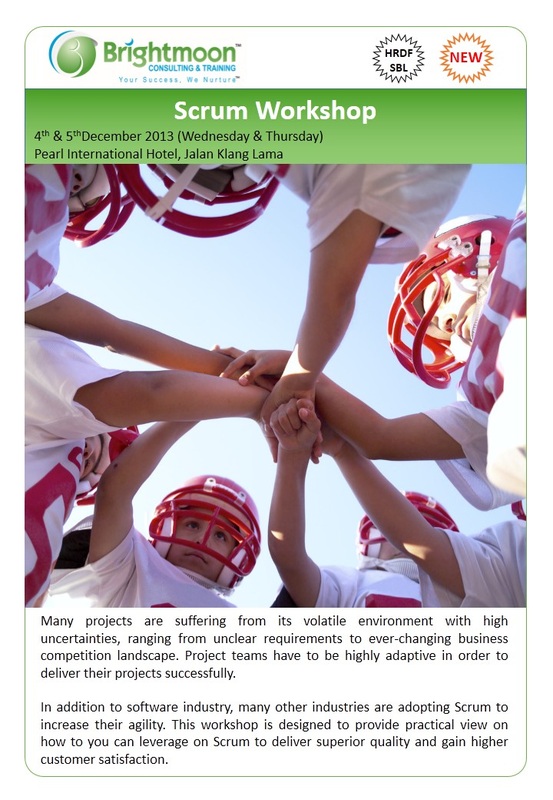Please refer to attached flyer (3 images) for greater details.
Who We Are
Allow us to briefly introduce ourselves - Brightmoon Consulting & Training. We have combined experience of 30 years in Software Development and Project Management. We are certified with two leading Scrum advocates - ScrumAlliance and Scrum.org. Our passion is to nurture the success of others in delivering successful software projects via Scrum.
In Need of Practical Knowledge in Scrum
Many companies are aware that they need to be highly agile to meet market dynamics. Thus, many of them introduce scrum/ agile into their work. However, many are unable to reap much benefits of scrum. Primary factor is they don't have practical knowledge and skills to make scrum work for them. Most of the existing trainings emphasizes on certification and not much on its practicality and usage. Therefore, it inspires us to share our passion in Scrum to you.












 RSS Feed
RSS Feed


